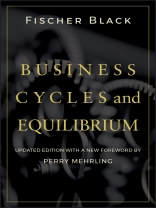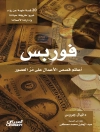An updated look at what Fischer Black’s ideas on business cycles
and equilibrium mean today
Throughout his career, Fischer Black described a view of
business fluctuations based on the idea that a well-developed
economy will be continually in equilibrium. In the essays that
constitute this book, which is one of only two books Black ever
wrote, he explores this idea thoroughly and reaches some surprising
conclusions.
With the newfound popularity of quantitative finance and risk
management, the work of Fischer Black has garnered much attention.
Business Cycles and Equilibrium-with its theory that
economic and financial markets are in a continual equilibrium-is
one of his books that still rings true today, given the current
economic crisis. This Updated Edition clearly presents
Black’s classic theory on business cycles and the concept of
equilibrium, and contains a new introduction by the person who
knows Black best: Perry Mehrling, author of Fischer Black and
the Revolutionary Idea of Finance (Wiley). Mehrling goes inside
Black’s life to uncover what was occurring during the time Black
wrote Business Cycles and Equilibrium, while also shedding
light on what Black would make of today’s financial and economic
meltdown and how he would best advise to move forward.
The essays within this book reach some interesting conclusions
concerning the role of equilibrium in a developed economy
* Warns about the use and abuse of modeling
* Explains the risky business of risk in a straightforward and
accessible style
* Contains chapters dedicated to 'the effects of uncontrolled
banking, ’ 'the trouble with econometric models, ’ and 'the effects
of noise on investing’
* Includes commentary on Black’s life and work at the time
Business Cycles and Equilibrium was written as well as
insight as to what Black would make of the current financial
meltdown
Engaging and informative, the Updated Edition of
Business Cycles and Equilibrium will give you a better
understanding of what is really going on during these uncertain and
volatile financial times.
Spis treści
Foreword v
Introduction xxi
Chapter 1: Banking and Interest Rates in a World Without Money: The Effects of Uncontrolled Banking 1
Chapter 2: Active and Passive Monetary Policy in a Neoclassical Model 23
Chapter 3: Rational Economic Behavior and the Balance of Payments 43
Chapter 4: Uniqueness of the Price Level in Monetary Growth Models with Rational Expectations 65
Chapter 5: Purchasing Power Parity in an Equilibrium Model 81
Chapter 6: Ups and Downs in Human Capital and Business 85
Chapter 7: How Passive Monetary Policy Might Work 91
Chapter 8: What a Non-Monetarist Thinks 99
Chapter 9: Global Monetarism in a World of National Currencies 107
Chapter 10: The ABCs of Business Cycles 117
Chapter 11: A Gold Standard with Double Feedback and Near Zero Reserves 129
Chapter 12: The Trouble with Econometric Models 135
Chapter 13: General Equilibrium and Business Cycles 153
Chapter 14: Noise 169
Index 191
O autorze
FISCHER BLACK is regarded as one of the great innovators of modern finance theory. He is most famous for cofounding the legendary Black-Scholes equation, although he contributed much more to finance in the areas of portfolio insurance, commodity futures pricing, bond swaps, interest rate futures, and global asset allocation models. Black worked at the University of Chicago and the MIT Sloan School of Management, as well as Goldman Sachs. He received his Ph D in applied mathematics from Harvard University. Black died in 1995, two years before the Nobel Prize was awarded to Myron Scholes and Robert C. Merton for their work on option pricing. Since the Nobel Prize is not given posthumously, Black was given a prominent mention for the key role he played in developing the equation.












